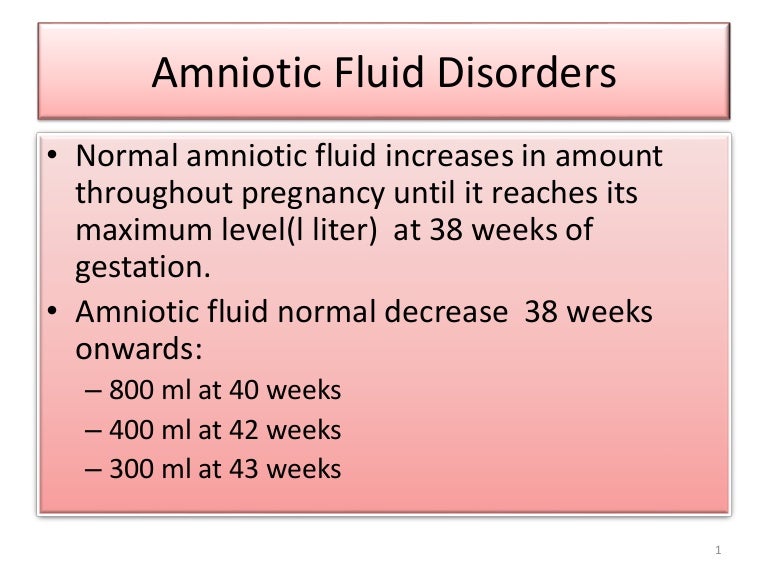


Oligohydramnios is an infrequent finding in the second trimester. At this stage oligohydramnios may also be due to iatrogenic causes (ie, post chorionic villous sampling) or its cause may be unknown. Causes include congenital heart anomalies, chromosomal aneuploidy, fetal demise, and ruptured membranes. In the first trimester, oligohydramnios is a rare finding and is usually associated with a poor outcome. The etiologies vary according to the severity and the trimester in which oligohydramnios is diagnosed. The incidence of reduced AFV varies from 0.5% to 5%, depending on the study population and the definition of oligohydramnios. Findings at AFV evaluation should be combined with other clinical and U/S assessments for optimal interpretation of their significance and for management of the pregnancy. To improve reliability of findings, it may be helpful to repeat the measurements in the presence of abnormal values. 9 Thus SDP measurement may be the more appropriate method for assessing AFV during fetal surveillance in the preterm period, when false-positive diagnoses may lead to iatrogenic preterm delivery.Ī recent systematic review reports an improved positive likelihood ratio (LR) of SDP compared with AFI for prediction of adverse perinatal outcome (LR 6.2, 95% CI 2.3–16.9 vs 2.7, 95% CI, 1.3–5.7) but not for birthweight <10th percentile (LR 2.6, 95% CI 1.7–4.0 vs 2.6, 95% CI, 1.9–3.5) in the presence of oligohydramnios. The most commonly used U/S diagnostic criteria for AFV abnormalities are polyhydramnios: SDP >8 cm or AFI >25 cm, and oligohydramnios: SDP 1500 mL).Ī review comparing AFI and SDP has found that use of AFI results in overdiagnosis of oligohydramnios, leading to unnecessary interventions (eg, labor induction), which often contribute to increased morbidity without an improvement in perinatal outcomes. SDP is the criterion used in the biophysical profile to document adequacy of AFV. SDP refers to the vertical dimension of the largest pocket of amniotic fluid (with a horizontal measure of at least 1 cm) not containing umbilical cord or fetal extremities and measured at a right angle to the uterine contour and perpendicular to the floor. 4 It may be useful, however, in circumstances in which visualization of cord-free pockets of fluid is difficult (eg, obesity).ĪFI is calculated by summing the depth in centimeters of 4 different pockets of fluid not containing cord or fetal extremities in 4 abdominal quadrants using the umbilicus as a reference point and with the transducer perpendicular to the floor. Color Doppler U/S does not improve the diagnostic accuracy of U/S estimates of AFV. Objective measures should be used if the subjective assessment is abnormal in patients at increased perinatal risk (Table 1), and in all patients examined in the late third trimester or post-term.Īmniotic fluid index (AFI) and single deepest pocket (SDP) are the most-used semi-quantitative techniques.

3 However, subjective evaluation does not provide a numerical value that can be used to compare patients and to follow trends in AFV over time. A subjective assessment of AFV should be performed at every antenatal U/S examination it has intraobserver and interobserver agreement of 84% and 96%, respectively. Ultrasound (U/S) examination is the only practical method of assessing AFV. The predictive ability of AFV alone, however, was generally poor. 1Ī recent systematic review demonstrated associations between oligohydramnios, birthweight 90th percentile, and perinatal mortality. Abnormal AFV has been associated with an increased risk of perinatal mortality and several adverse perinatal outcomes, including premature rupture of membranes (PROM), fetal abnormalities, abnormal birth weight, and increased risk of obstetric interventions. Assessment of amniotic fluid volume (AFV) is an integral part of antenatal ultrasound evaluation during screening exams, targeted anatomy examinations, and in tests assessing fetal well-being.


 0 kommentar(er)
0 kommentar(er)
